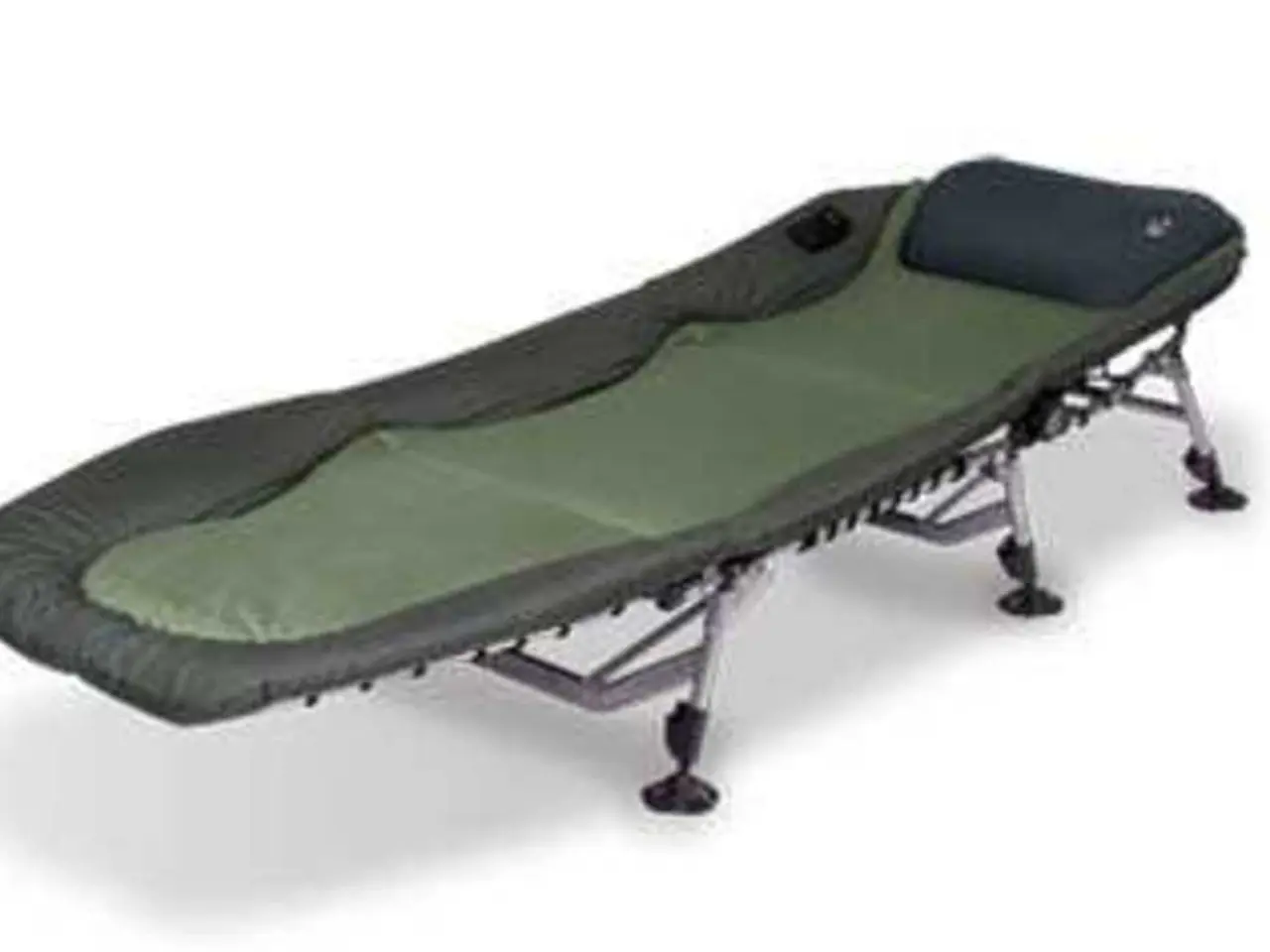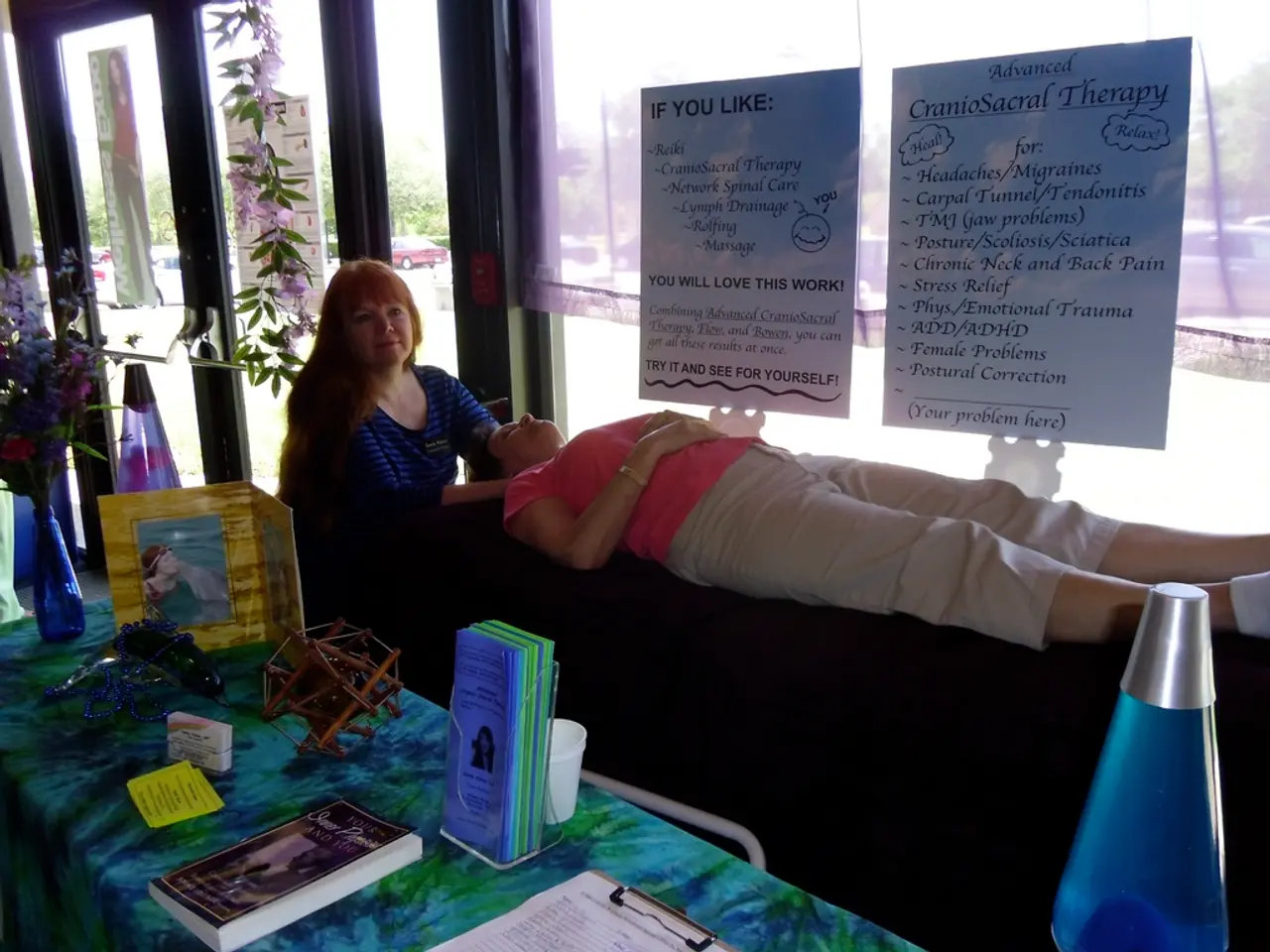Nighttime leg cramps: origins, risk factors, and methods for alleviation
Nighttime leg cramps, also known as Nocturnal Leg Cramps (NLCs), are a common issue affecting many individuals, particularly those over the age of 60. These involuntary muscle spasms in the leg can cause discomfort or pain, often disrupting sleep and leading to feelings of tiredness or lethargy the next day.
The causes and risk factors of NLCs are diverse. Muscle fatigue and overuse, often experienced by those who stand or walk for extended periods, can double the risk of nighttime cramps due to overworked calf muscles that tighten after falling asleep. Electrolyte imbalances, such as low levels of magnesium, potassium, or calcium in the blood, impair muscle relaxation and are common in around 30% of adults with weekly night cramps. Mild dehydration, which concentrates electrolytes, can also increase cramp frequency by about 20% in athletes.
Sleeping positions can contribute to NLCs as well. Poor foot posture, such as sleeping with toes pointed downwards, keeps calf muscles shortened and can trigger cramps during sleep. Certain medications, including diuretics, statins, inhaled beta-agonists, intravenous iron sucrose, naproxen, teriparatide, levalbuterol, albuterol, conjugated estrogens, pregabalin, may list muscle cramps as a side effect.
Pregnancy, with its mineral shifts, altered circulation, and extra weight, raises the risk of leg cramps. Underlying health issues, such as restless legs syndrome, kidney failure, vitamin D or iron deficiency, nerve damage, and chronic venous insufficiency, can also contribute to or worsen NLCs. Vascular problems, like poor venous return due to varicose veins or vein disease, increase blood pooling and pressure in leg muscles, triggering cramps, especially when lying down.
Addressing hydration, mineral levels, sleep posture, and underlying health issues can help reduce cramp frequency. Drinking plenty of water throughout the day and doing mild exercise, such as walking or spending a few minutes on a stationary bike before bedtime, may help prevent leg cramps in the long term.
Simple stretches can help ease the cramped muscles, while treating leg cramps at night, in the moment they occur, may help a person get more rest. Some possible home remedies include gently stretching out the muscle, massaging the area, using a foam roller, flexing and unflexing the foot, applying heat, but taking nonsteroidal anti-inflammatory drugs (NSAIDs) will not help ease cramps.
If the cramps spread to other muscles or become severe, people should contact a doctor for a full diagnosis. In some cases, doctors may prescribe medications to treat chronic leg cramps, including carisoprodol (Soma), gabapentin (Horizant, Gralise, and Neurontin), diltiazem (Cardizem), verapamil (Verelan and Calan), orphenadrine (Norflex and Norgesic).
Changing shoes to more supportive footwear may help reduce leg cramps for some people. Anyone dealing with leg cramps regularly should contact a doctor for a full diagnosis. A 2023 study suggests that vitamin K2 may help to treat NLCs. If a person experiences leg cramps frequently, if they get in the way of daily life, and if home methods do not help, they should speak with a doctor about possible causes and treatments.
In summary, frequent nighttime leg cramps commonly arise from muscle fatigue, electrolyte imbalances, certain medications, and anatomical or vascular factors, with additional risks posed by pregnancy and some medical conditions. By addressing these factors, individuals can take steps to reduce the occurrence of nighttime leg cramps and improve their sleep quality.
- Some individuals over the age of 60 experience nighttime leg cramps, also known as Nocturnal Leg Cramps (NLCs).
- These involuntary muscle spasms in the leg can cause discomfort or pain, often disrupting sleep.
- Nighttime cramps are more common in those who stand or walk for extended periods, due to overworked calf muscles.
- Electrolyte imbalances, such as low levels of magnesium, potassium, or calcium, can impair muscle relaxation.
- Mild dehydration, which concentrates electrolytes, can increase cramp frequency by about 20% in athletes.
- Sleeping positions can contribute to NLCs, particularly when sleeping with toes pointed downwards.
- Certain medications may list muscle cramps as a side effect, including diuretics, statins, and naproxen.
- Pregnancy, with its mineral shifts and altered circulation, raises the risk of leg cramps.
- Underlying health issues, like restless legs syndrome or nerve damage, can also contribute to or worsen NLCs.
- Vascular problems like varicose veins or vein disease can increase blood pooling and pressure in leg muscles, triggering cramps.
- Addressing hydration, mineral levels, sleep posture, and underlying health issues can help reduce cramp frequency.
- Drinking plenty of water and mild exercise before bedtime may help prevent leg cramps.
- Simple stretches can help ease cramped muscles, while home remedies such as foam rollers, heat, and foot flexing may provide temporary relief.
- Severe or spreading leg cramps should be assessed by a doctor for a full diagnosis.
- Doctors may prescribe medications like carisoprodol, gabapentin, diltiazem, verapamil, orphenadrartine, and others to treat chronic leg cramps.
- Changing shoes to more supportive footwear may help reduce leg cramps for some people.
- A 2023 study suggests that vitamin K2 may help to treat NLCs.
- If home methods do not help and leg cramps interfere with daily life, consult a doctor about possible causes and treatments.
- Nighttime leg cramps can be linked to chronic diseases like diabetes, multiple sclerosis, and autoimmune disorders, affecting both mens' and women's health.
- In the realm of health and wellness, workplace-wellness programs can address potential causes of leg cramps, such as standing workstations and electrolyte imbalance from sweat.
- Neglecting leg cramps could lead to long-term complications like chronic pain, sleep deprivation, and increased risk of hypertension, stroke, and other cardiovascular-health concerns, underlining the importance of therapies and treatments for leg cramps and overall health-and-wellness management.




